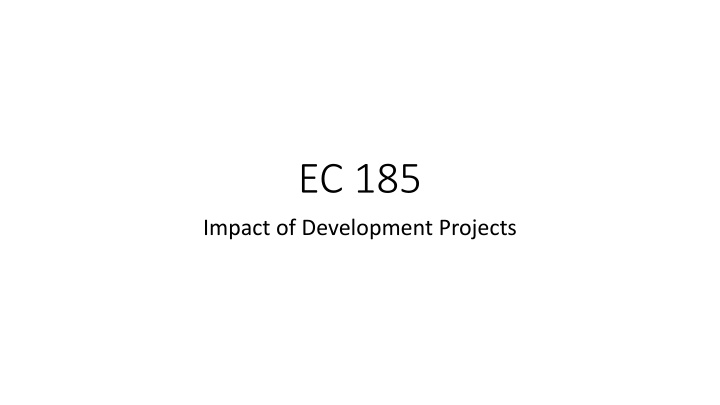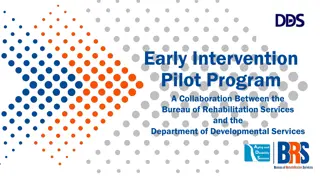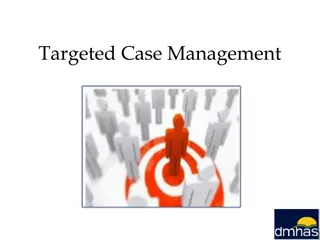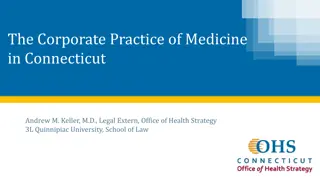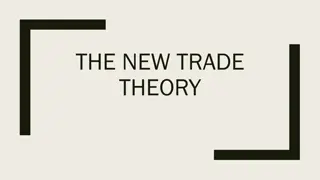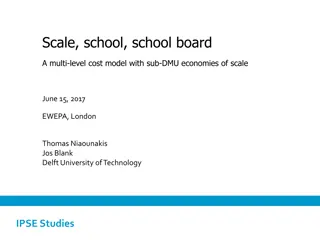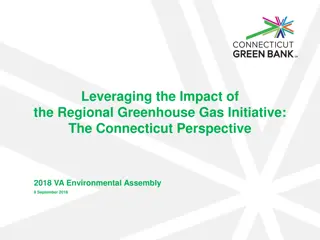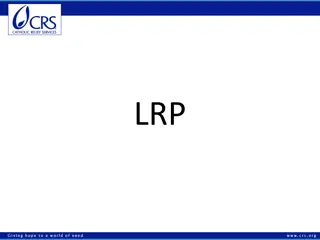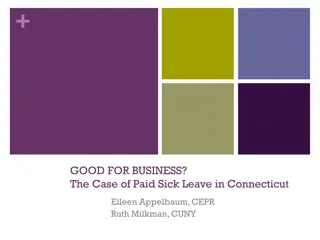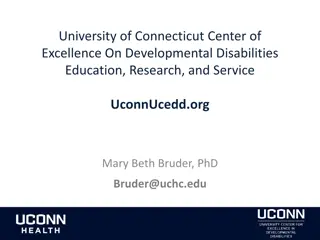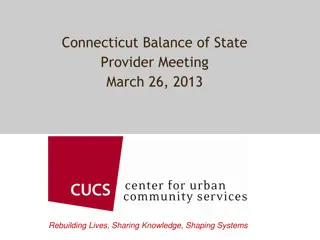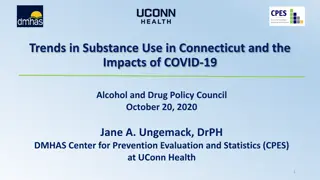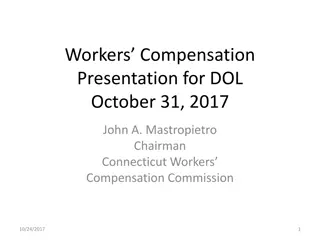Impact of Development Projects on Local Economies: Case Studies from Connecticut
Spillovers and linkages play a crucial role in the impact of development projects in Connecticut. Projects like Hartford's Adrian's Landing Waterfront development have led to increased tourism and economic growth. While some areas like Hartford's Downtown are benefiting from revitalization, challenges persist in regions like East Hartford. Additionally, cases such as the failed Pfizer research campus in New London highlight the importance of strategic planning in development initiatives.
Download Presentation

Please find below an Image/Link to download the presentation.
The content on the website is provided AS IS for your information and personal use only. It may not be sold, licensed, or shared on other websites without obtaining consent from the author.If you encounter any issues during the download, it is possible that the publisher has removed the file from their server.
You are allowed to download the files provided on this website for personal or commercial use, subject to the condition that they are used lawfully. All files are the property of their respective owners.
The content on the website is provided AS IS for your information and personal use only. It may not be sold, licensed, or shared on other websites without obtaining consent from the author.
E N D
Presentation Transcript
EC 185 Impact of Development Projects
Spillovers and Linkages Spillovers and Linkages Spillovers Spending that arises as a result of the increased economic activity that arises from a development project Can be public or private or a mix This is the basis for most of the development projects that can be identified in Connecticut in the last two decades Impacts are local Aim is to increase spending and employment And quality of life
Examples Harbor Yard Spillovers minimal due to its isolation from the rest of Bridgeport Did create a small number of part-time jobs Eliminated a part of a brownfield SteelePointe (already discussed)
Hartford Adrian s Landing Waterfront (riverside) development The Connecticut Convention Center The Connecticut Science Center Front Street Entertainment/Residential District Marriott Hotel Theatres
Spillovers from Development. Large increase in tourism in central Hartford Particularly from Convention Center Projects are intertwined Visitors to the Convention Center stay at the Marriott, and may take advantage of the museum or the theatres. Downtown area looks considerably better than it did before the development
Problem for Hartford City is composed of three major regions Downtown, West Hartford and East Hartford West Hartford is a wealthy bedroom community Downtown is going through revitalization East Hartford remains poorly developed, with multiple economic problems
When Development Projects Go Bad New London Region already had a number of strengths Submarine base, Coast Guard Academy, Connecticut College Pfizer research campus was intended to round out economic development Unlike other projects discussed, not only had spillovers, but also linkages Research cooperation between Pfizer and Connecticut College
Plan Pushed by Pfizer, New London and Plan Pushed by Pfizer, New London and Connecticut College Connecticut College Multi-Acre R&D Plant Hundreds of high-paying jobs To facilitate: Pfizer given significant tax breaks Eminent Domain used to condemn land and demolish all the buildings (houses, etc.) Discussion on Eminent Domain usual purpose v. application in New London
Eventually led to Kelo v. New London Supreme Court ruled cities could use eminent domain to facilitate commercial projects Created a huge backlash, and many states have now passed laws that forbid the practice Susette Kelo went on to write Little Pink House about experience
After Supreme Court RulingPfizer Bails All buildings in area had been destroyed (except, strangely, the Italian-American Center) City left with vacant lot that generates NO tax revenue President of Connecticut College left shortly thereafter
Serves as Warning to Communities that use Serves as Warning to Communities that use Tax Incentives as Part of Development Tax Incentives as Part of Development Communities/cities bid against one another Incentives may be a waste of money
Linkages Linkages Refers to production linkages Industries using parts from other industries Or, using resources Sikorsky still utilizes machine shops in Bridgeport Leads to additional employment Impact of Sikorsky leaving the State would have been far worse than GE leaving
Local Examples Difficult, Since Manufacturing Local Examples Difficult, Since Manufacturing Sector in Decline Sector in Decline Unilever in Trumbull, CT Lured to Trumbull by Director of Economic Development Facility employs 400 researchers who are involved in product design (consumer healthcare products, e.g. soap) Clearly has many spillovers (additional spending, impact on housing market, etc.) Firm utilizes cooperative research agreements with other scientists (e.g. Yale faculty) Not just a commercial site, it also buys inputs from outside firm
Solutions include enticing stores back into neighborhoods Problem with effective demand Farmers markets, urban gardens, food banks 2 of 3 are seasonal, and provide only a partial solution Measurement: Initial research used GPS to identify stores Drew a 1/6 mile radius around small stores, wider around large stores Areas outside of circles were regarded as food deserts
Parr Article Parr Article Thorough Analysis of the Growth Thorough Analysis of the Growth Pole Model Pole Model A retrospective Looks back at the initial theory, its goals and actual applications Intended Goals: Regional Decentralization Modification of National Urban System Deconcentration Inter-regional Balances
Visually Development of a Region. Natural Pole Resource endowment (minerals, river, transportation center) Development spreads from center to rest of region
Farther away from center, effects less important Out of brown circle, enter periphery Region of low economic vitality Examples- Bakken Ridge (North Dakota) Chicago
Induced Poles Tend to be Much Smaller Deliberate placement within a region to spur development Automobile plant
Emphasis is on propulsive industries An economic activity that can push a region forward Car manufacturing, defense, high tech Electric Boat or Sikorsky would be the best example for Connecticut Creates high-paying jobs, linkages to other industries
Initially all Focus was on Natural Poles Characteristics: Ability to attract capital Innovation Entrepreneurship Natural poles were supposed to be large (>250,000 people) Parr is critical of over-emphasis on growth poles Ignored alternatives (e.g. transportation)
Specific Targets: Revive a depressed area Labor should then move to seek jobs Regional decentralization Modifying the national urban system Addressing concerns about over-population in specific areas by spreading out growth Attempt to avoid strains on urban transportation, housing, space, etc. Critics noted that the anticipated over-growth did not occur
Turning to the Developing World Turning to the Developing World Application of these strategies was supposed to help countries avoid the mistakes of the West Prevent dominance of a few cities (and the problems that arise when power is centralized) Parr notes that a small difference in costs promoted by a development plan may be overwhelmed by economic advantages of the central city Funnel development into regions that would traditionally be left behind Create even development that lifts country out of underdevelopment, not just a few urban centers
Strategy May Backfire Strategy May Backfire The more diffuse the spending, the less impactful it is Political consideration may force lots of small projects across diverse regions, rather than a few large investments Results may be disappointing
Page 14 Nuts and Bolts of Strategy Planned Development Natural growth poles are great, but entirely random Limited # of poles To work, need large investment Diffusion of investment across many regions will make it ineffective Requires alteration of employment and skill set of labor pool
Requires Concentration of Infrastructure Requires Concentration of Infrastructure To succeed, favored areas must be supported by transportation assets Roads, rail, etc. May create resentment among leaders in other regions
Two Potential Positive Outcomes First (as noted) the concentration of infrastructure Two, the pull of positive resource (e.g. labor) into the region Which raises another critique What happens to rest of area that is outside growth pole?
Traditional Methods of Planning for Traditional Methods of Planning for Development Development Assess: Problems that need to be addressed Employment, urban blight, poor growth Solutions to problem Cost and impact Role of private sector and government Post-initiative evaluation (did it work?)
Case Study Case Study Downers Grove, IL City of just under 50,000 in near suburbs of Chicago $88,000 median household income Very small population growth (2% in 15 years) Downtown thrived for years Construction of malls pulled customers out of downtown Downtown began to look worn-out Vacant store fronts, etc.
Downtown Revitalization Worked on specific areas (Ogden Ave.) Promoted downtown businesses Tried to draw shoppers back into downtown Specific development projects were promoted http://www.downers.us/public/docs/departments/co m_dvlpment/1999_Ogden_Avenue_Master_Plan.pdf
Compiled Long List of Redevelopment Opportunity sites Promoted these sites to developers and businesses Town experienced a modest revitalization Drain from malls continues, but has been pushed back against
Importance of Industrial Choice Ideally focus on so-called propulsive industries Those that move a region forward At best, a cluster of firms that produce intertwined products Also want to focus on high-technology, high rate of return sectors Promoting old industry may lead to failure, as industry may decline like it has elsewhere
Economics High Value-Added Means firms can also pay high wages Low elasticity of demand Can secure a high price without driving out customers Linkages Both backward and forward Back pulls from other industries in the region Forward pushes products out to other firms in the area
Example Example Machine tools Machines that are custom designed for high-end manufacturing Machines that can make machines or high-end end products Drill press Businesses input components to machine tool producer Producer pushes end product out to other producers
Can Reinvigorate and Entire Area Can Reinvigorate and Entire Area Creates multitude of high-paying jobs Cities compete for firms of this kind
Shift Shift- -Share Analysis Share Analysis Attempt to explain why employment is growing in a particular region Compares regional focus to national focus based upon industrial concentration Example: Automobile industry nationally 3-3.5 percent of total output San Antonio, TX Toyota Manufacturing Plant Share of local output would exceed the national average Share of employment due to car output would be more significant
